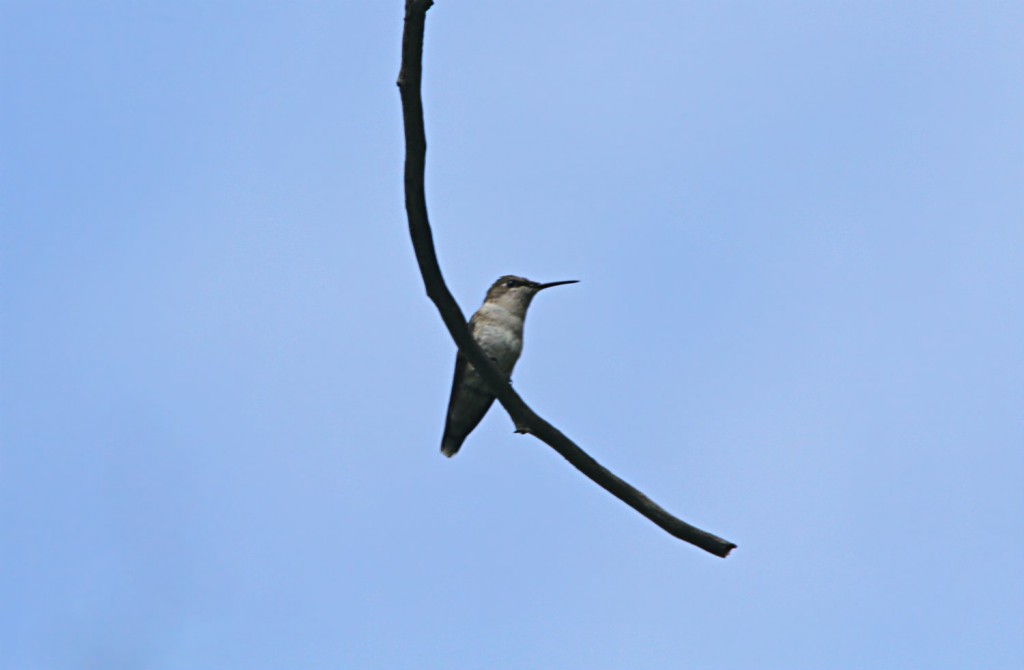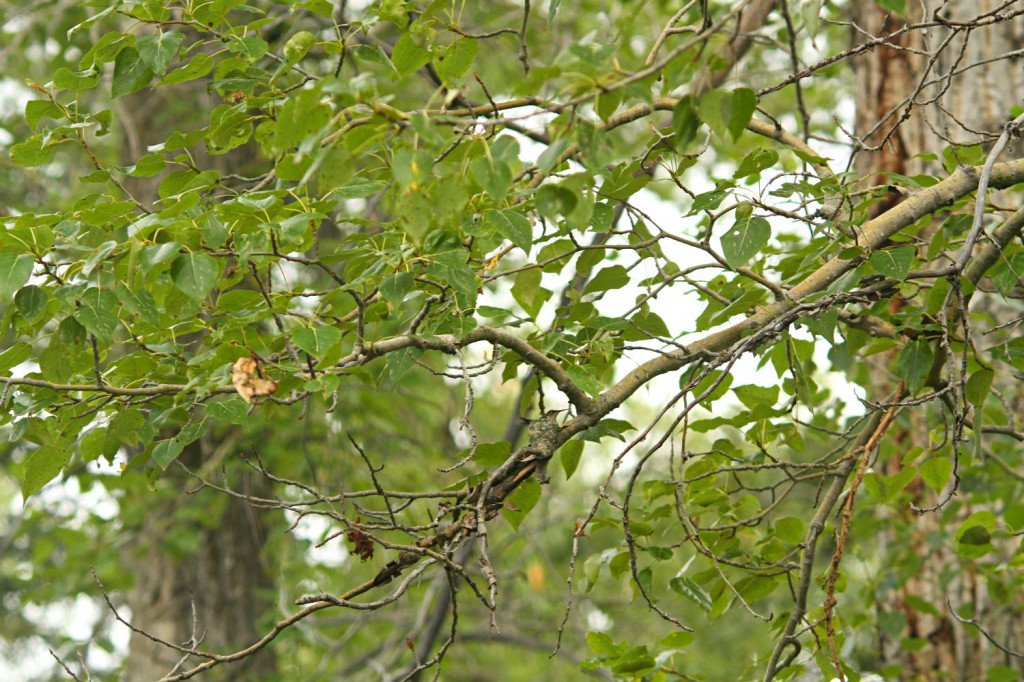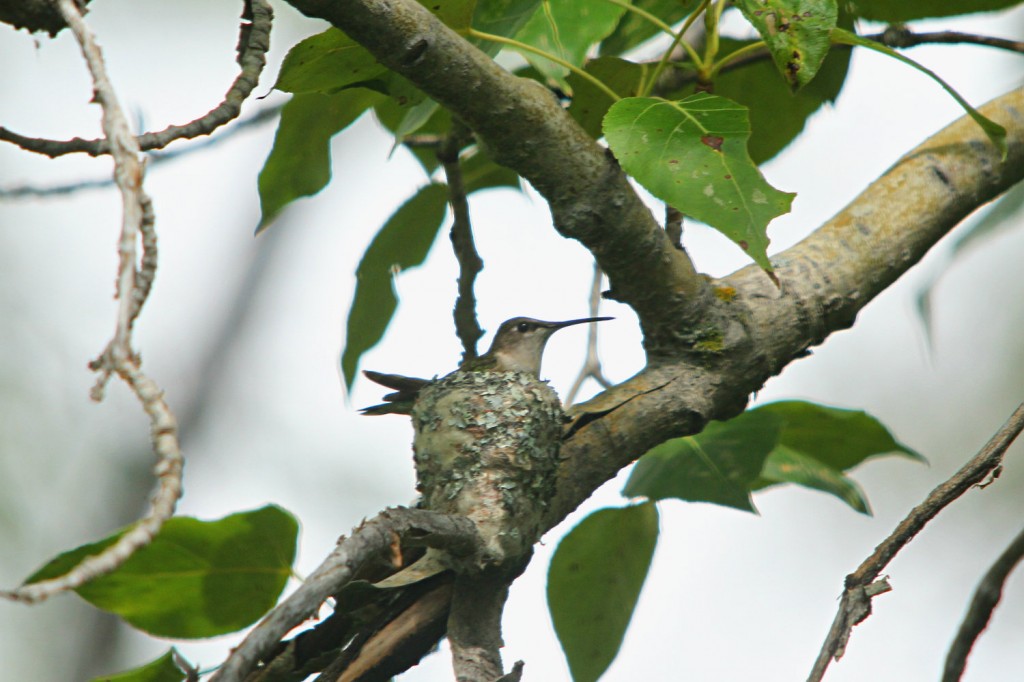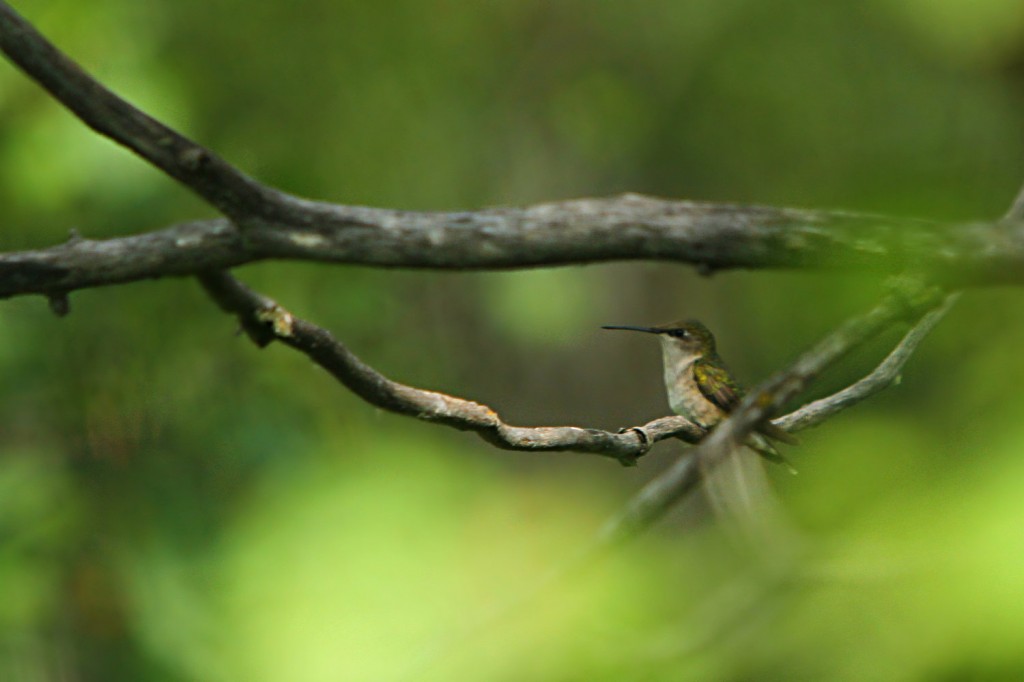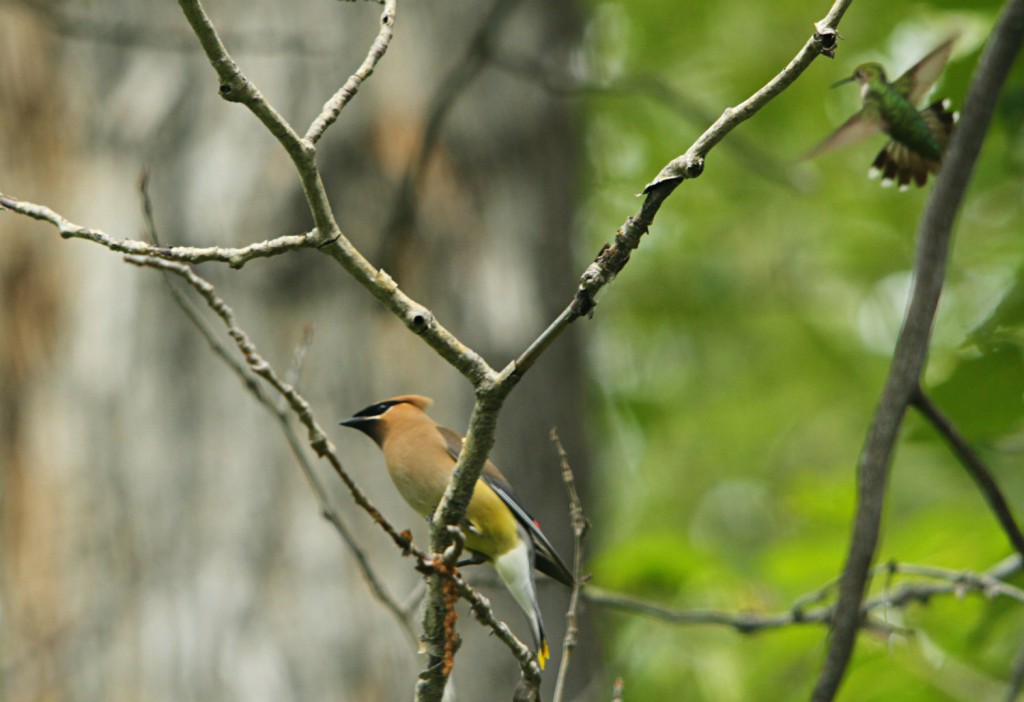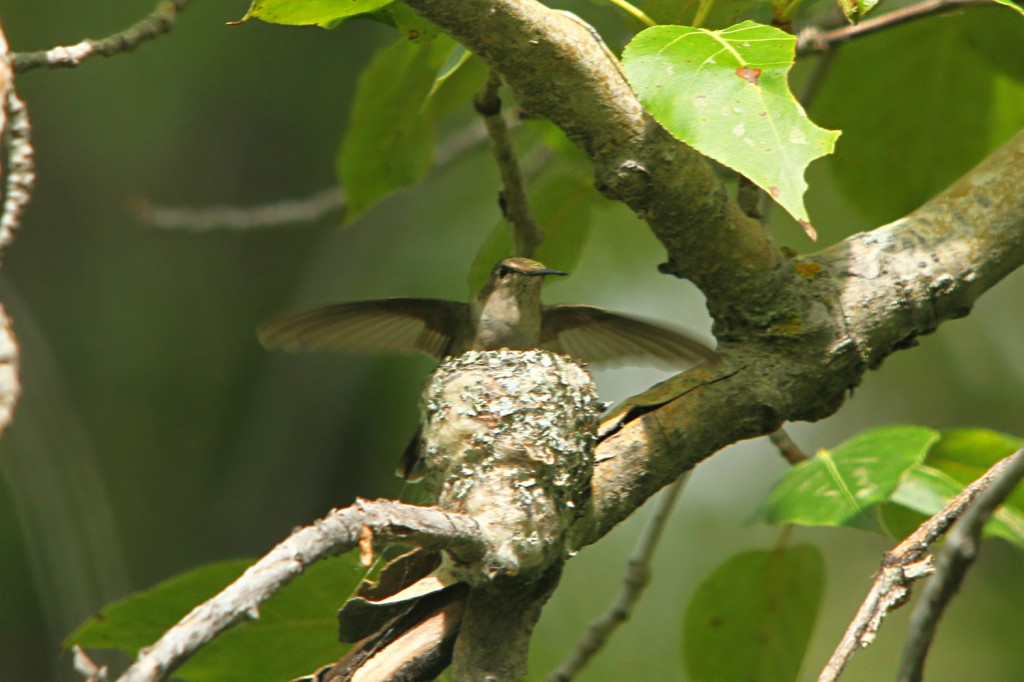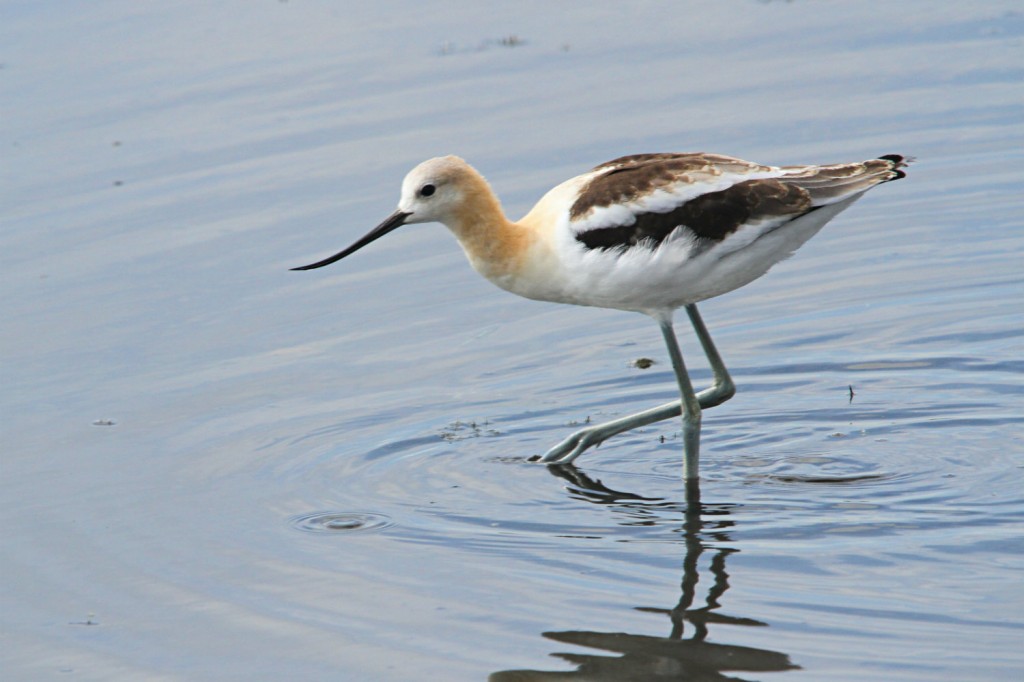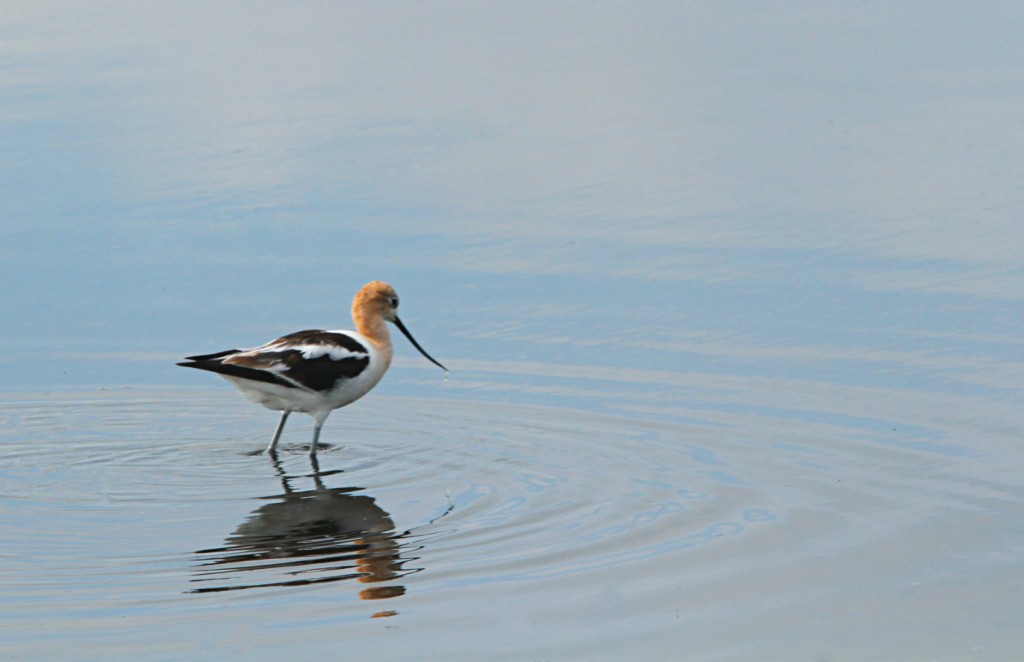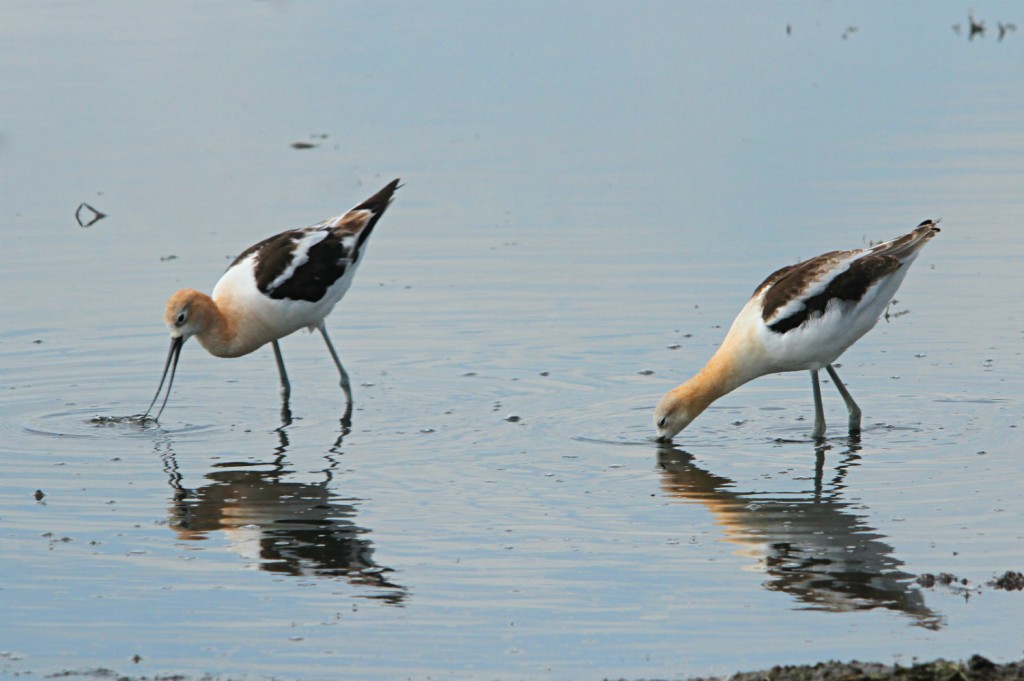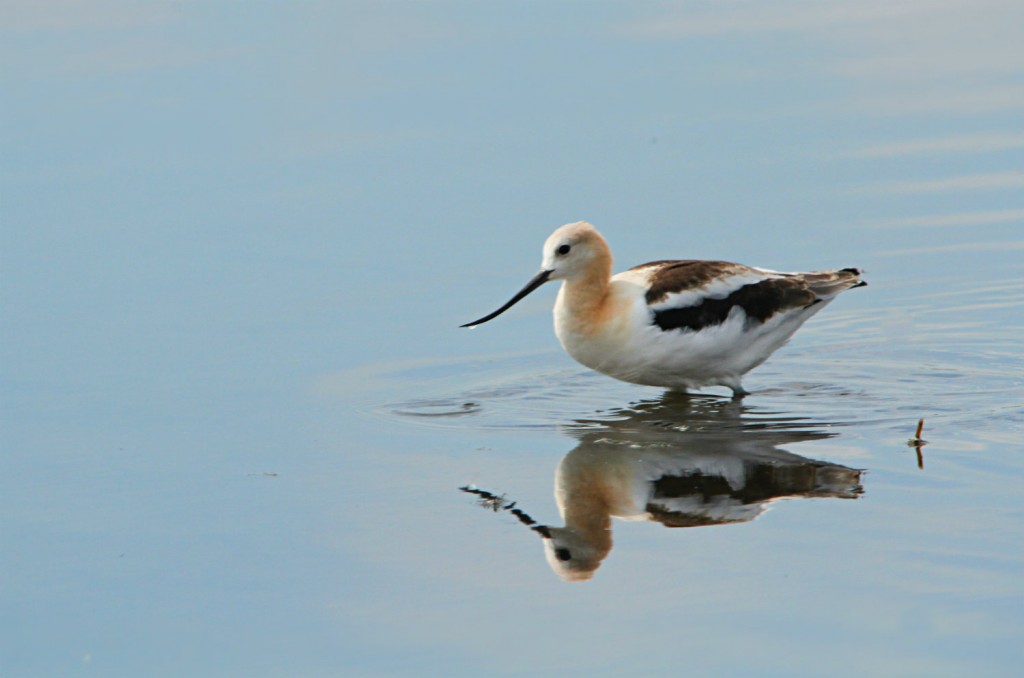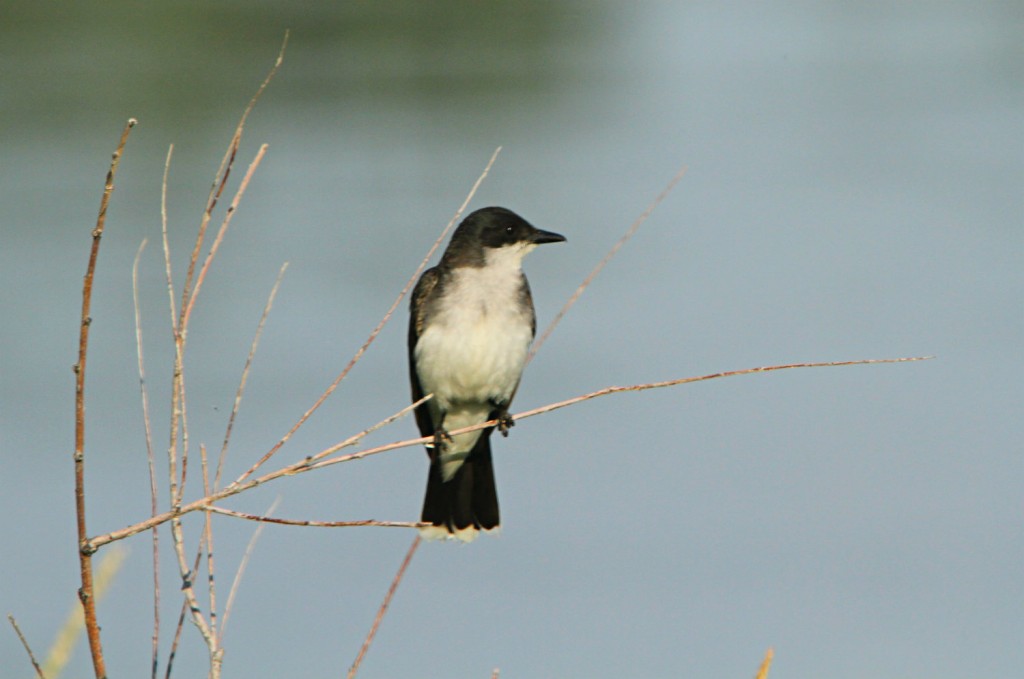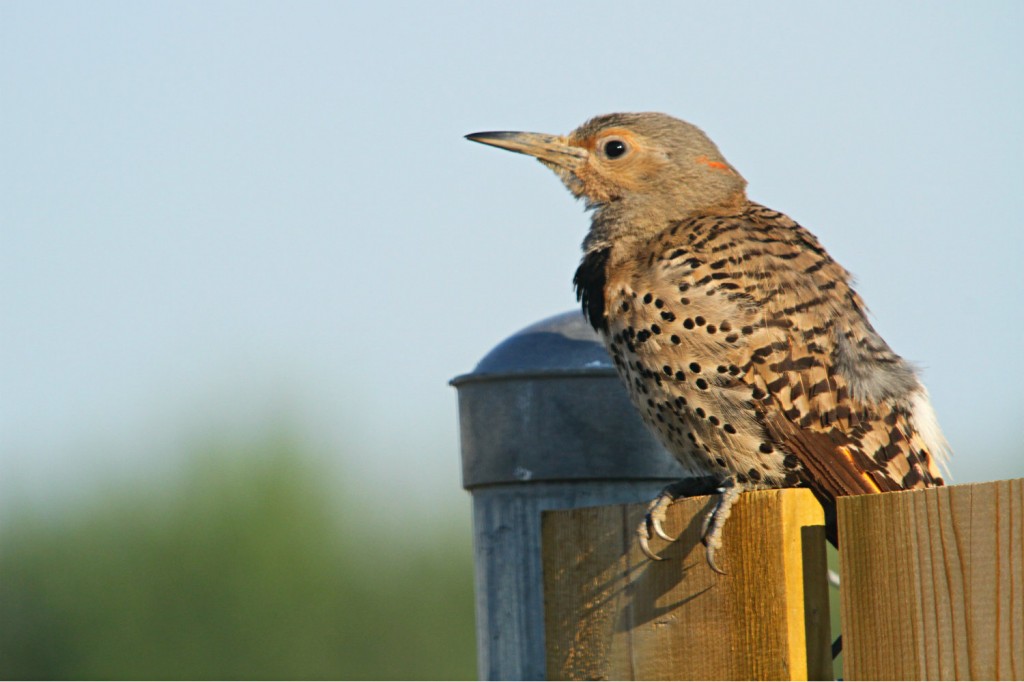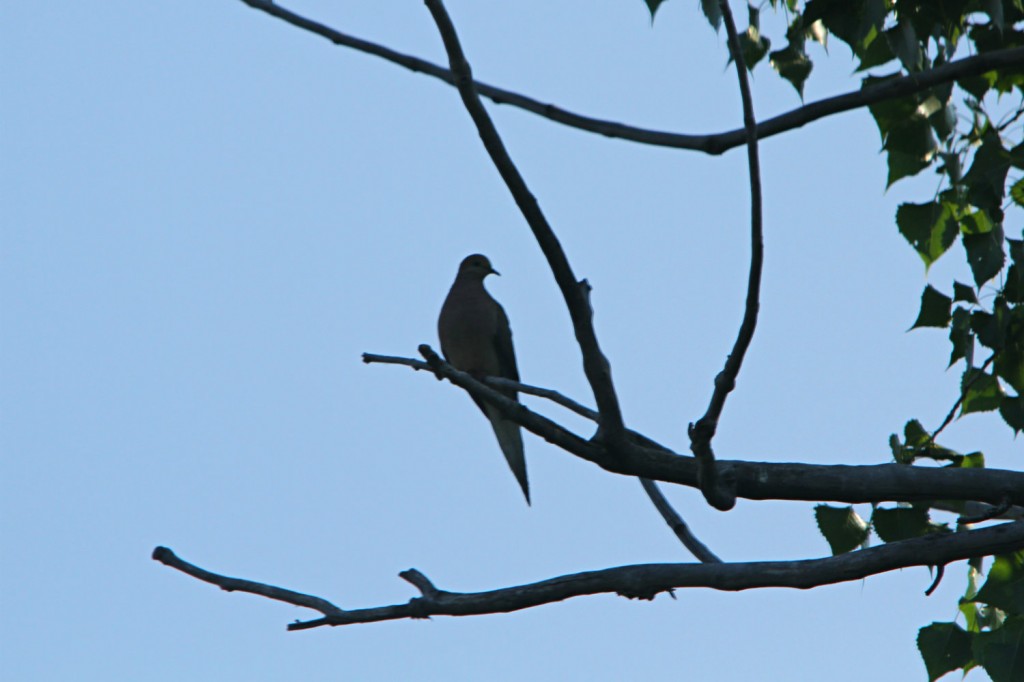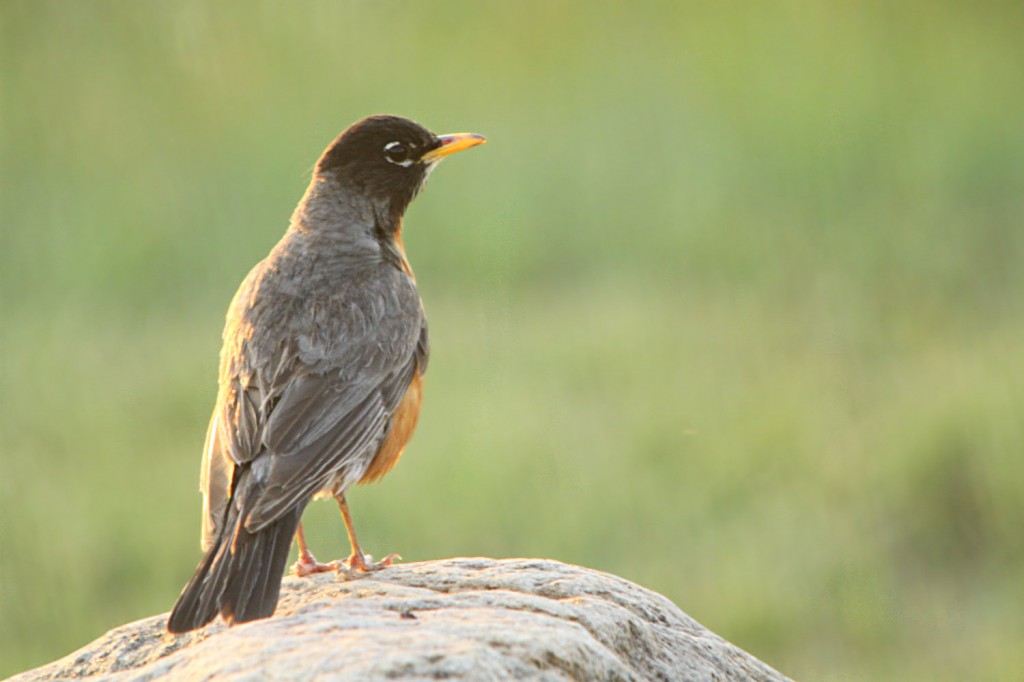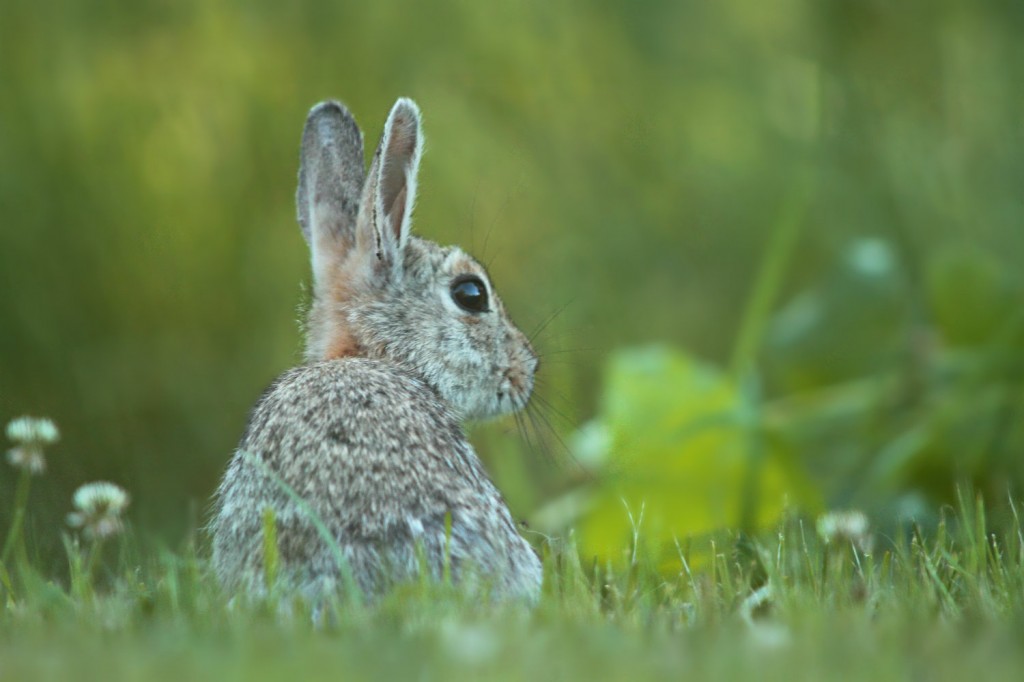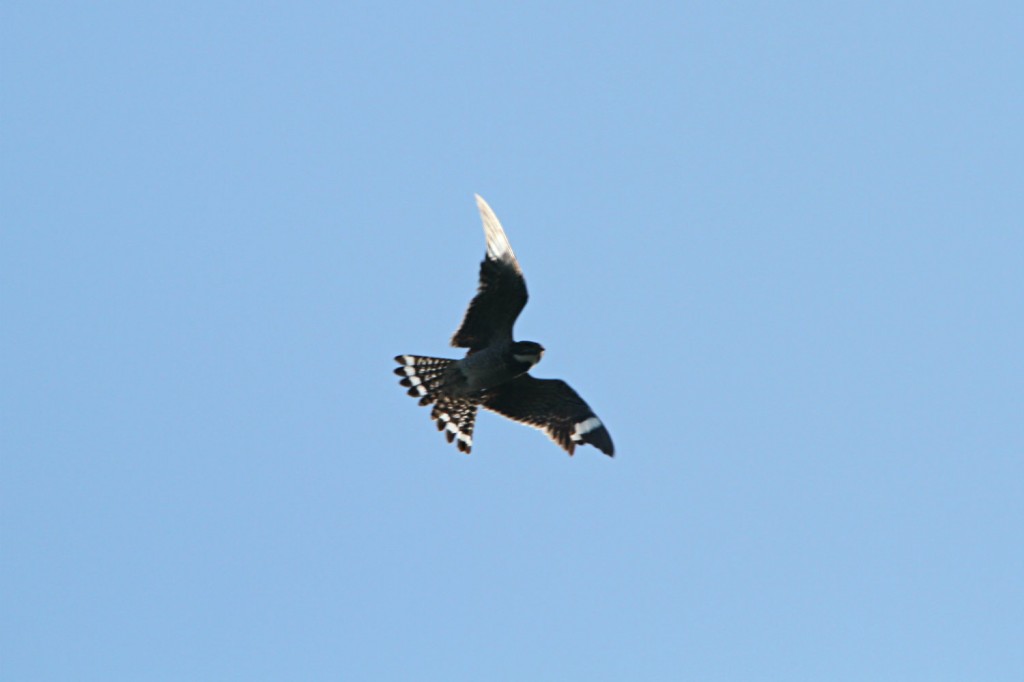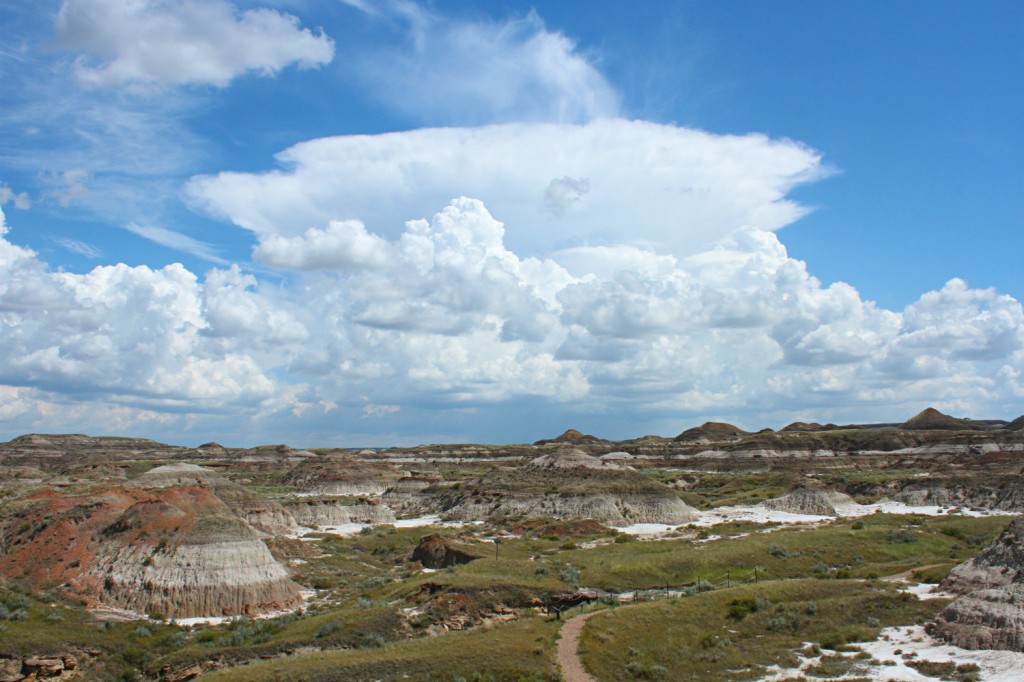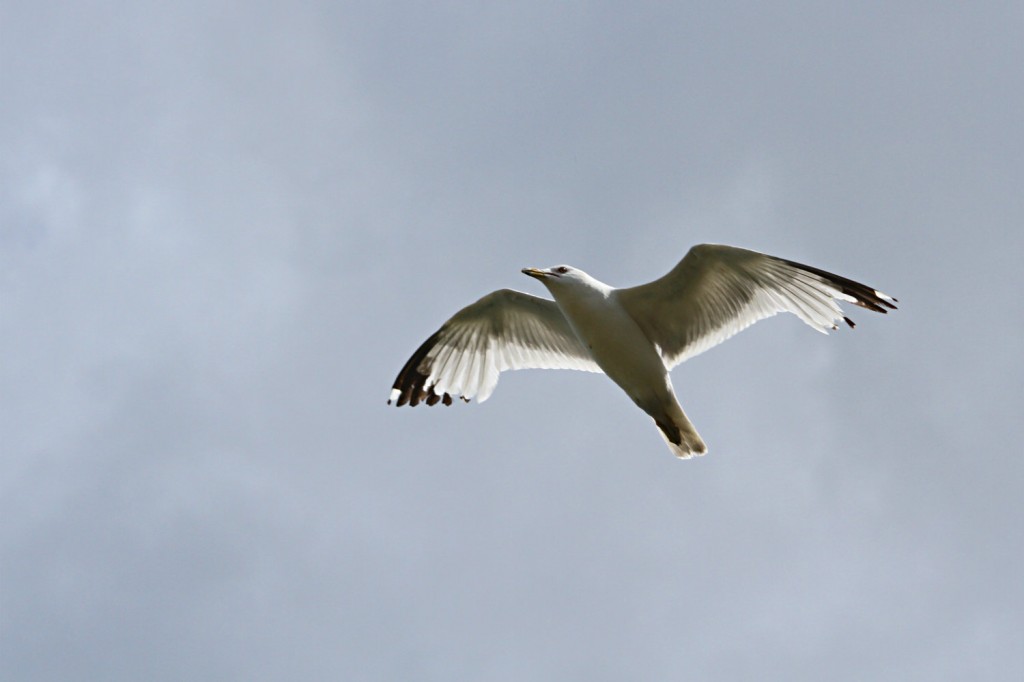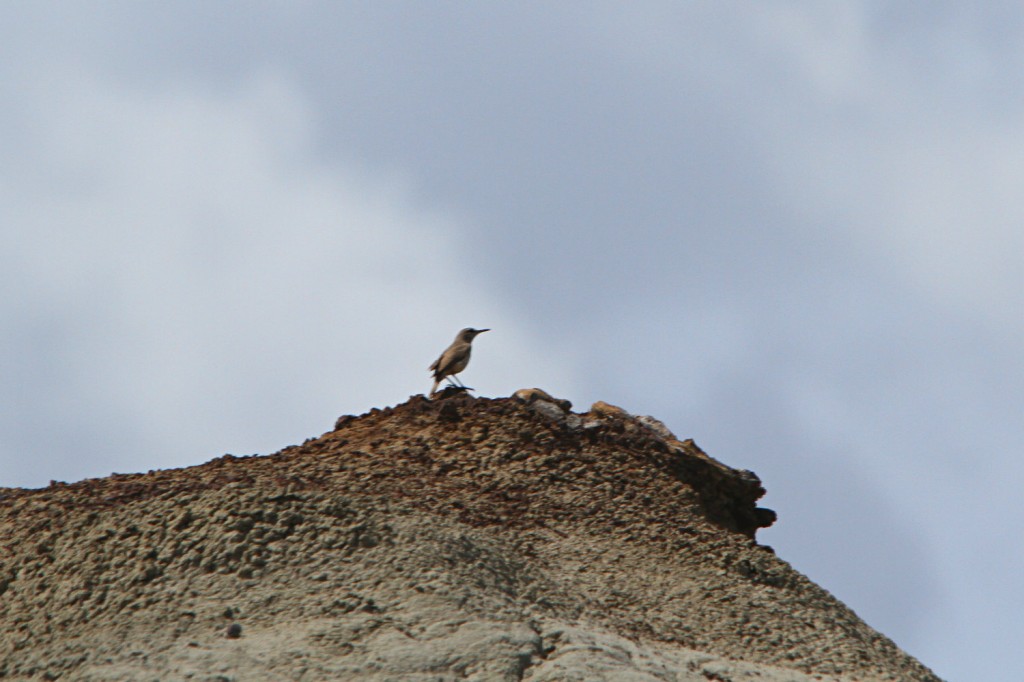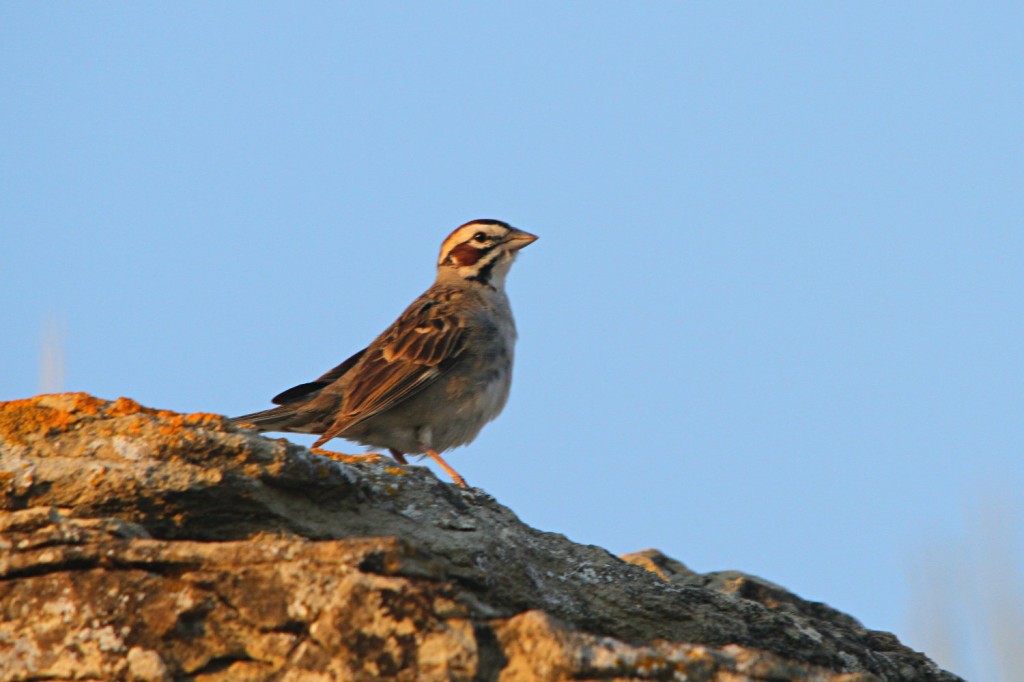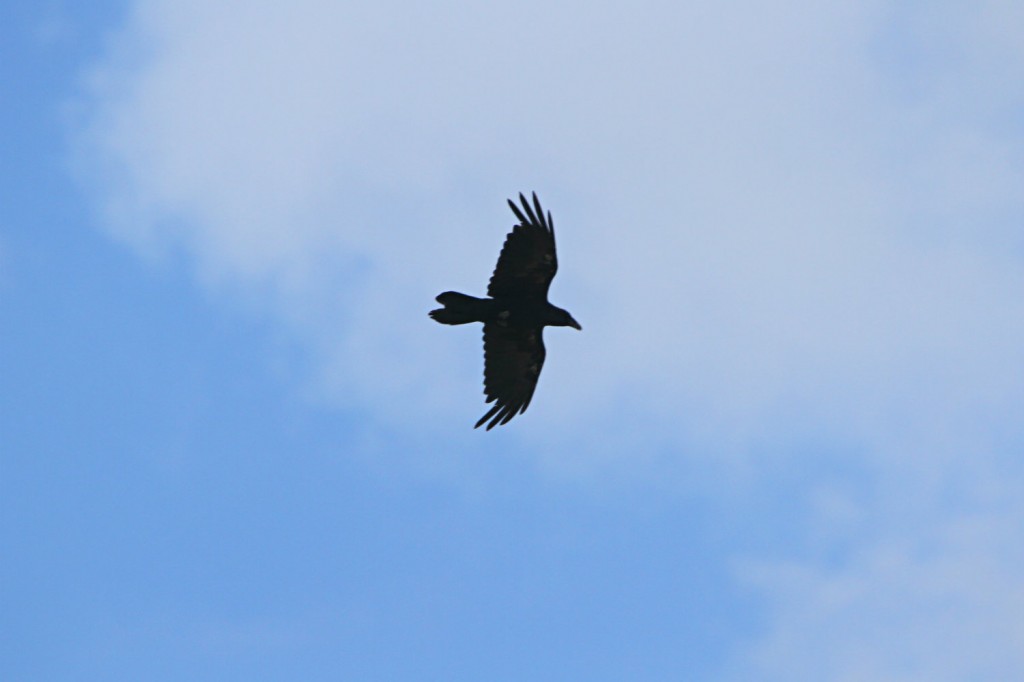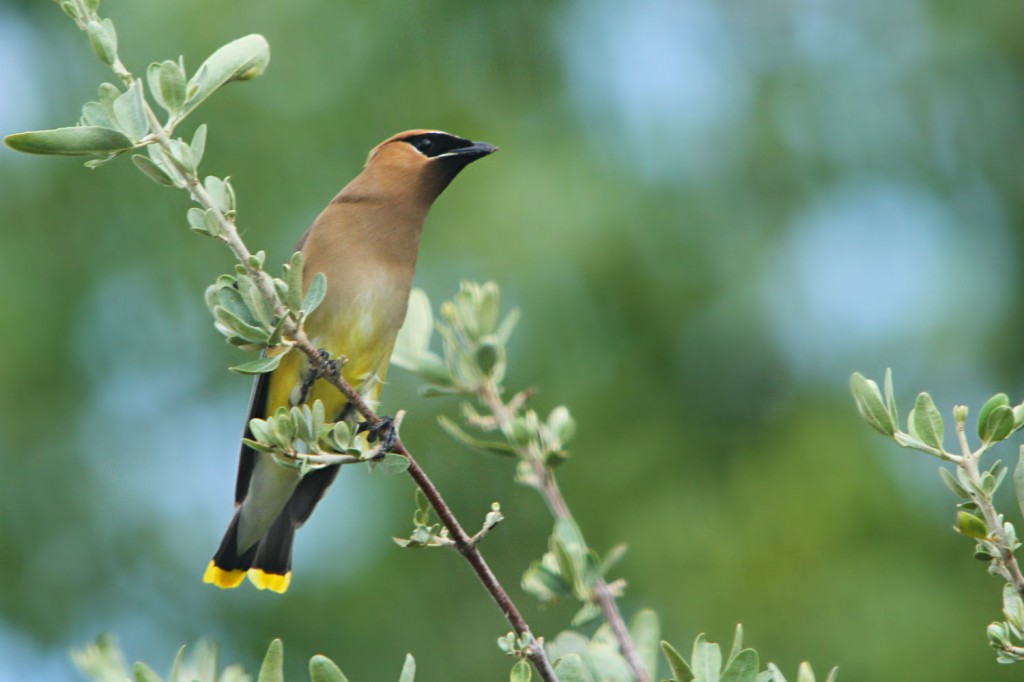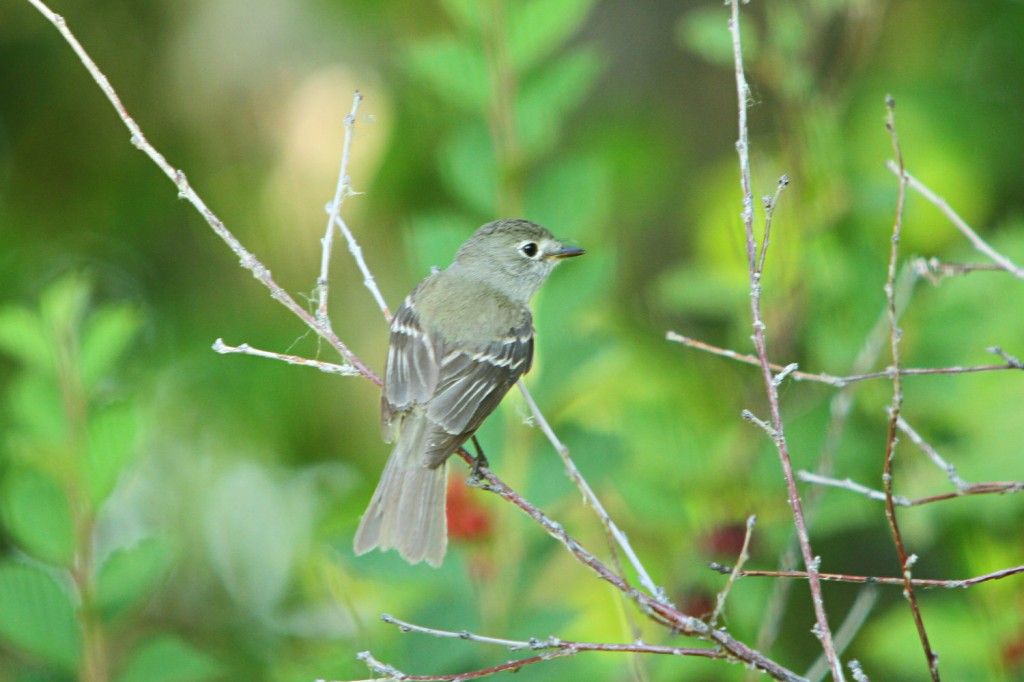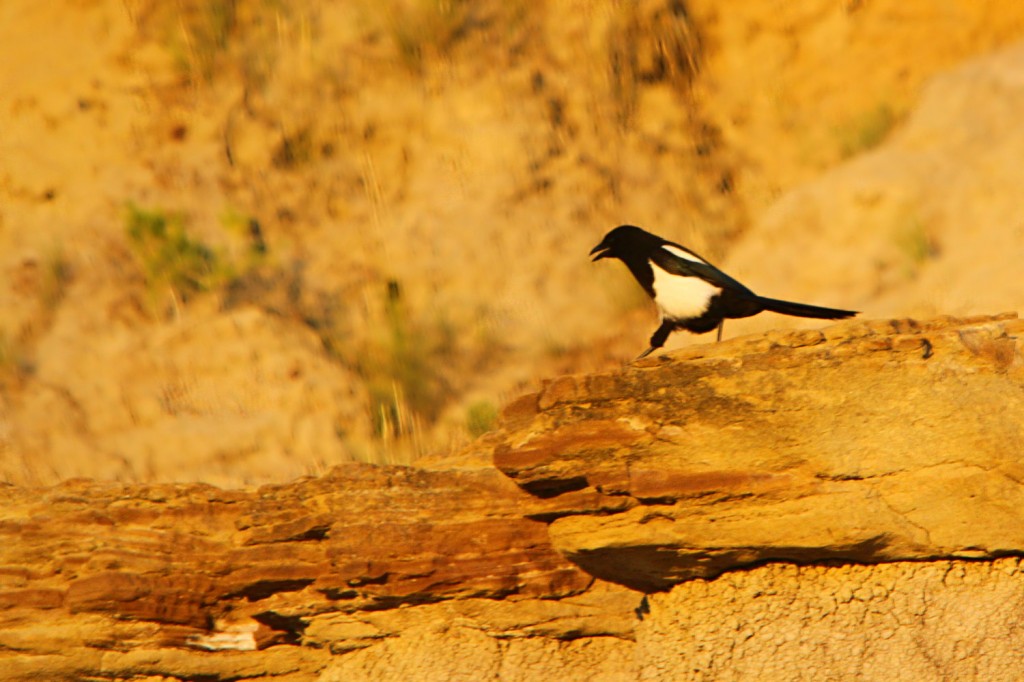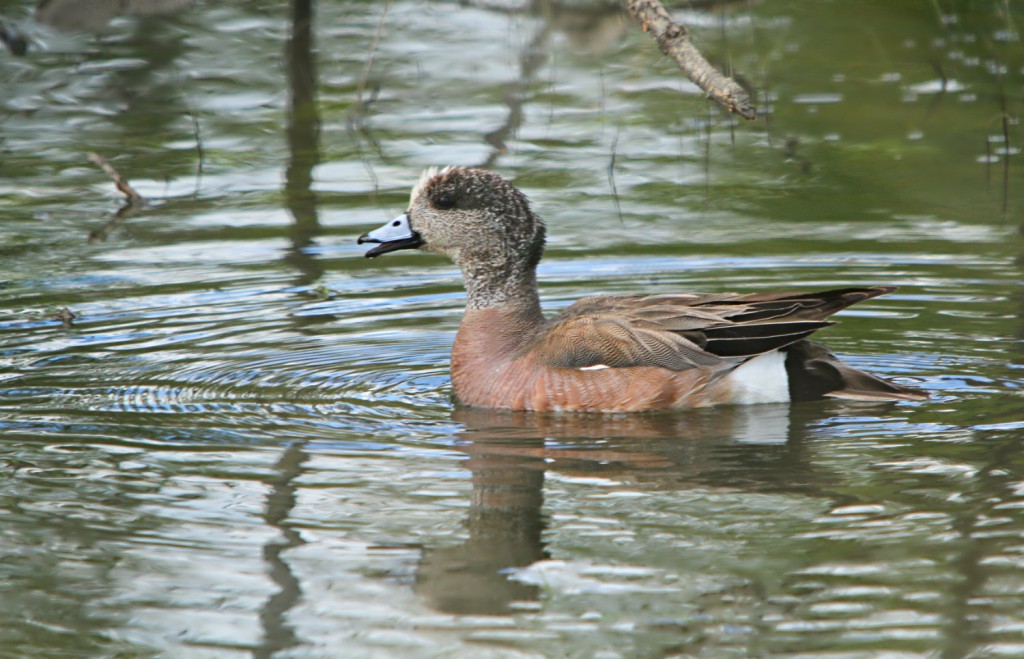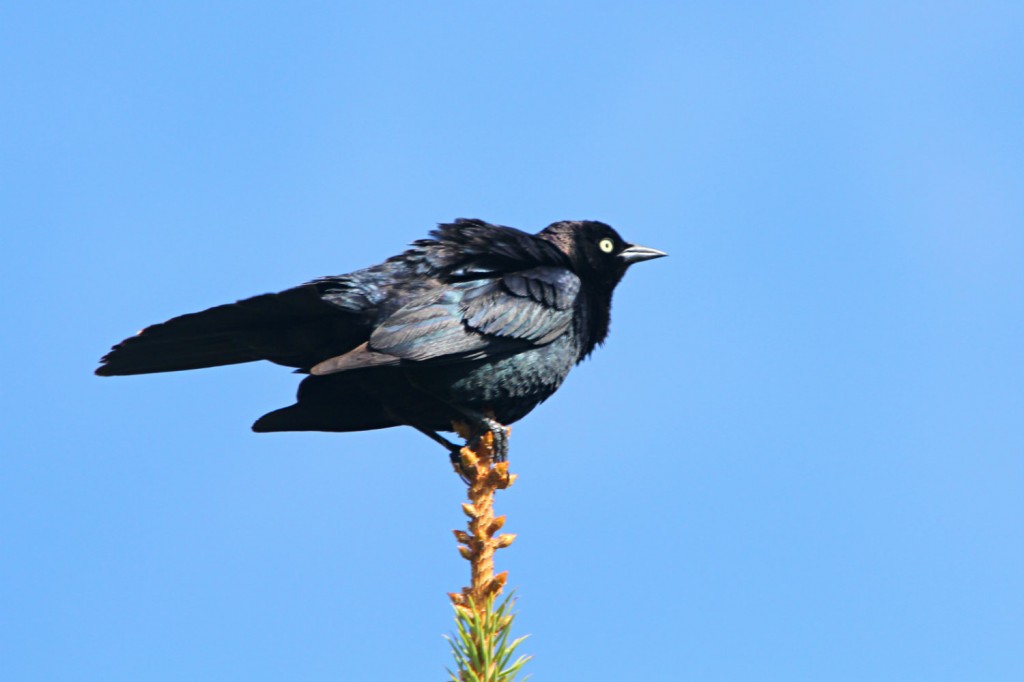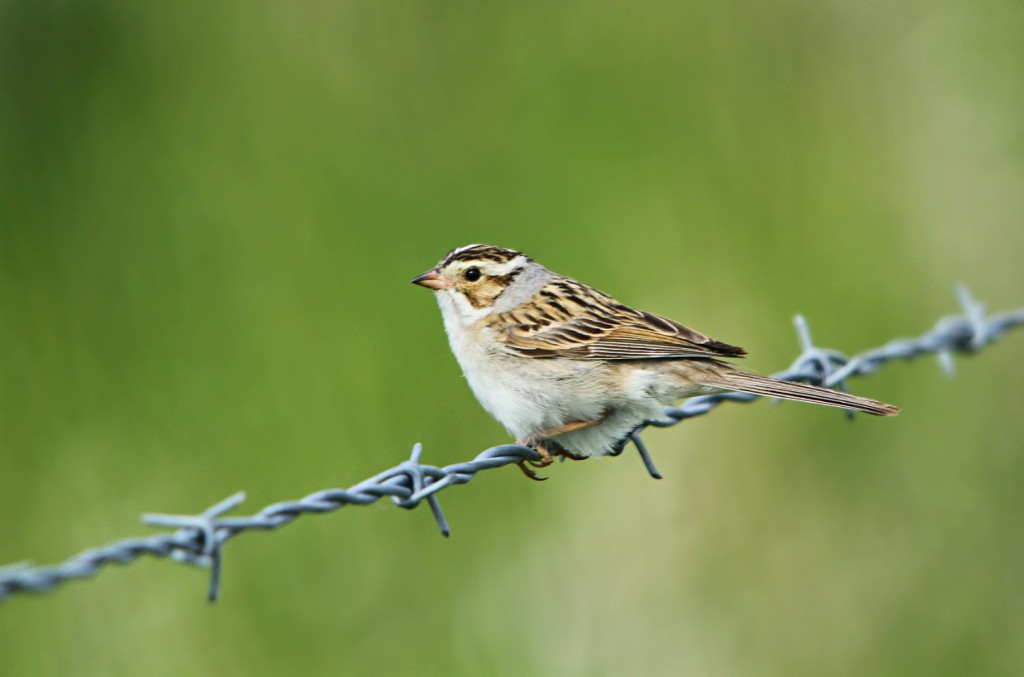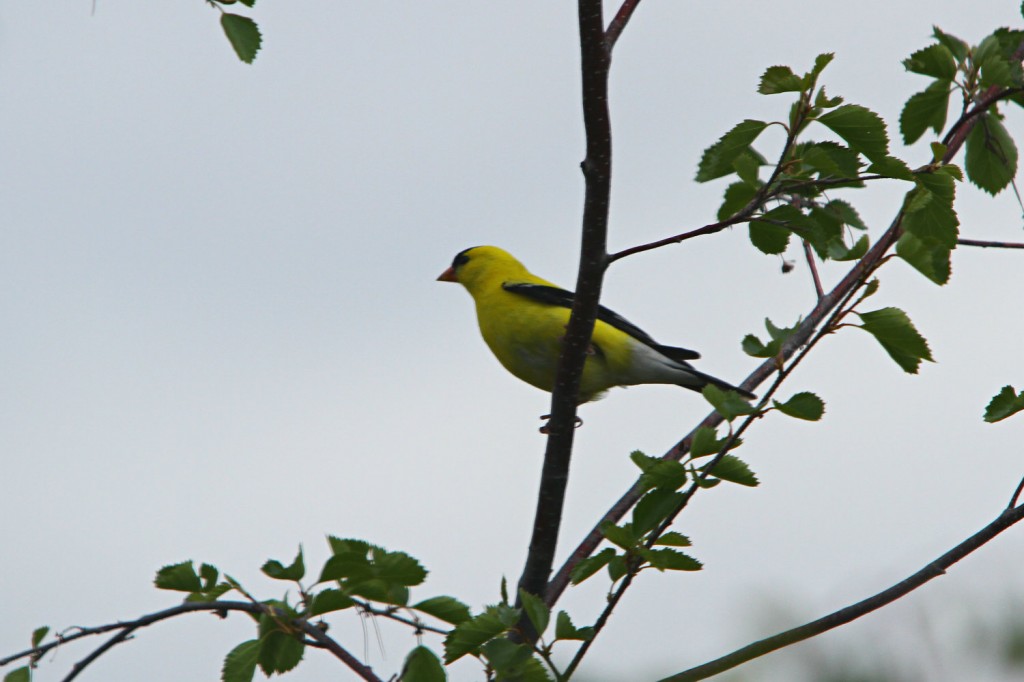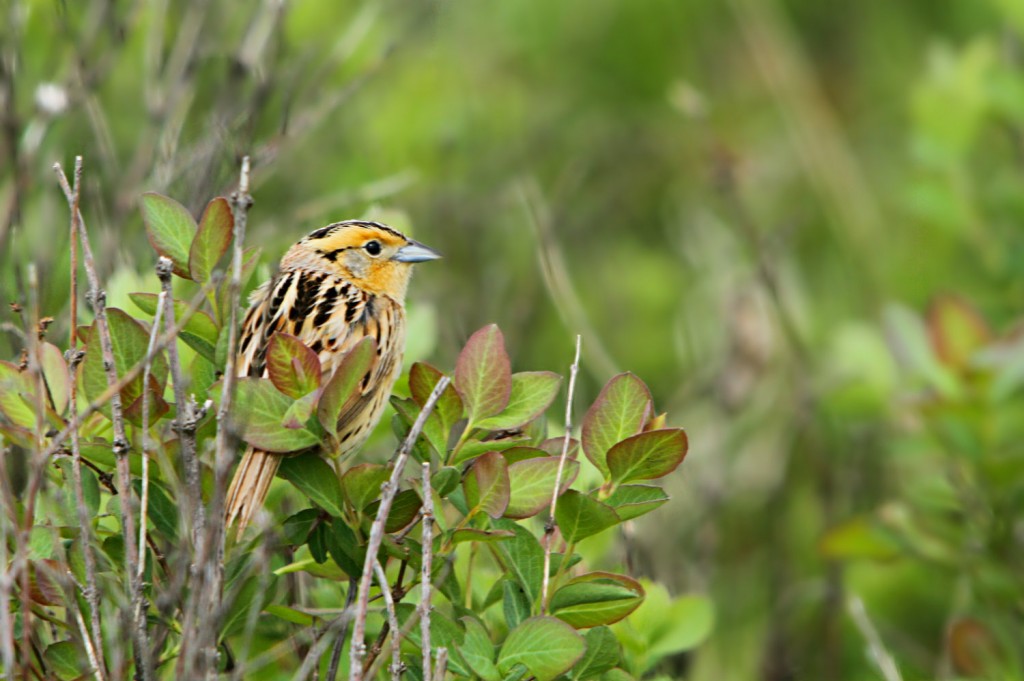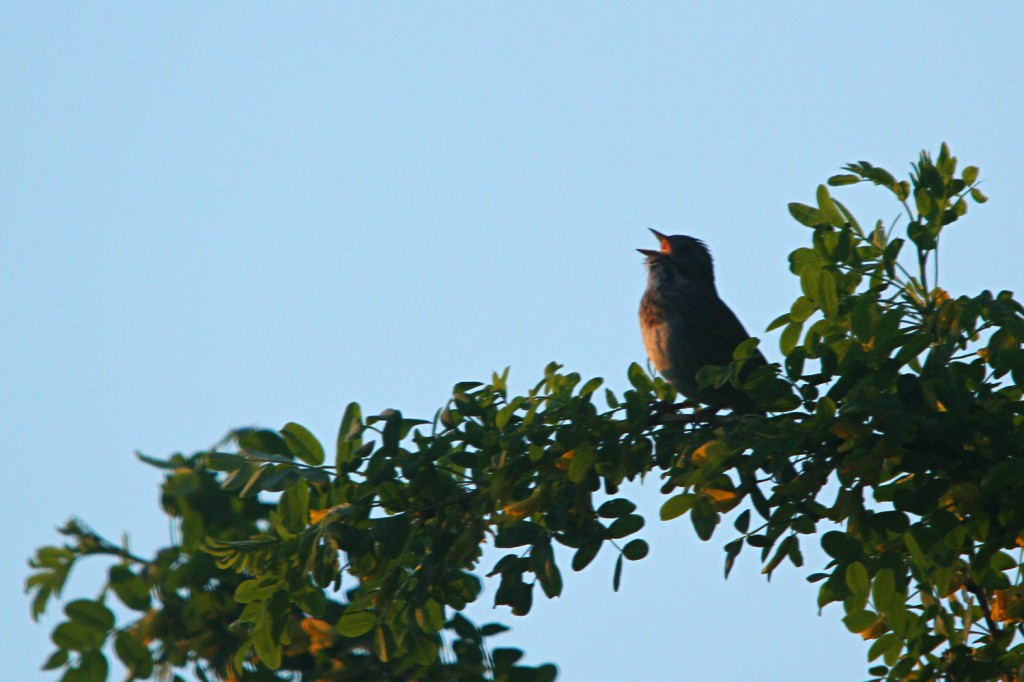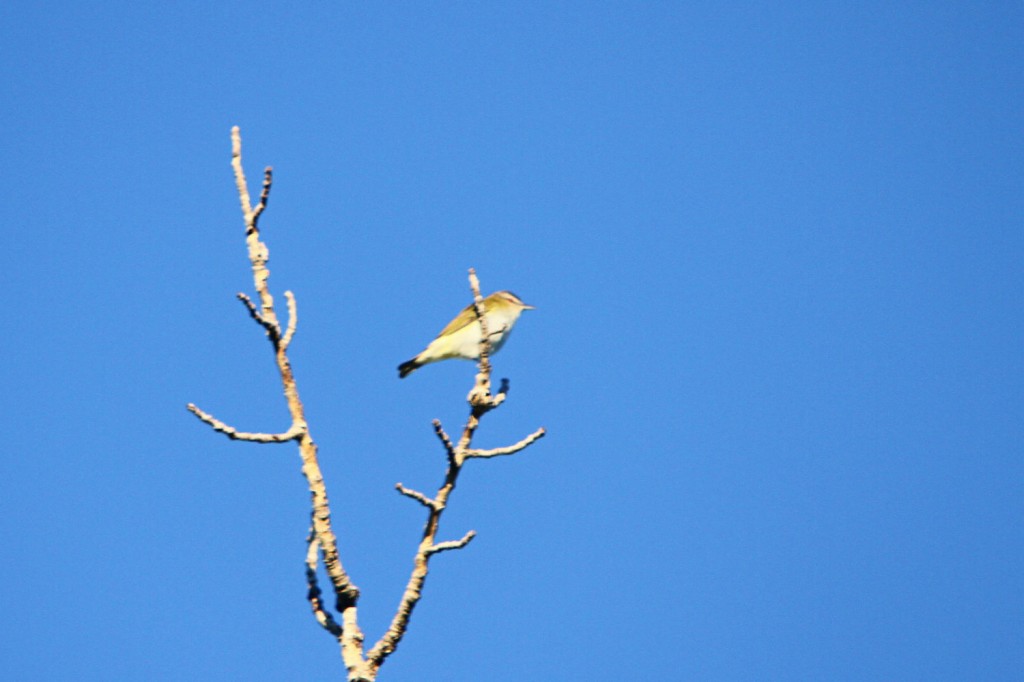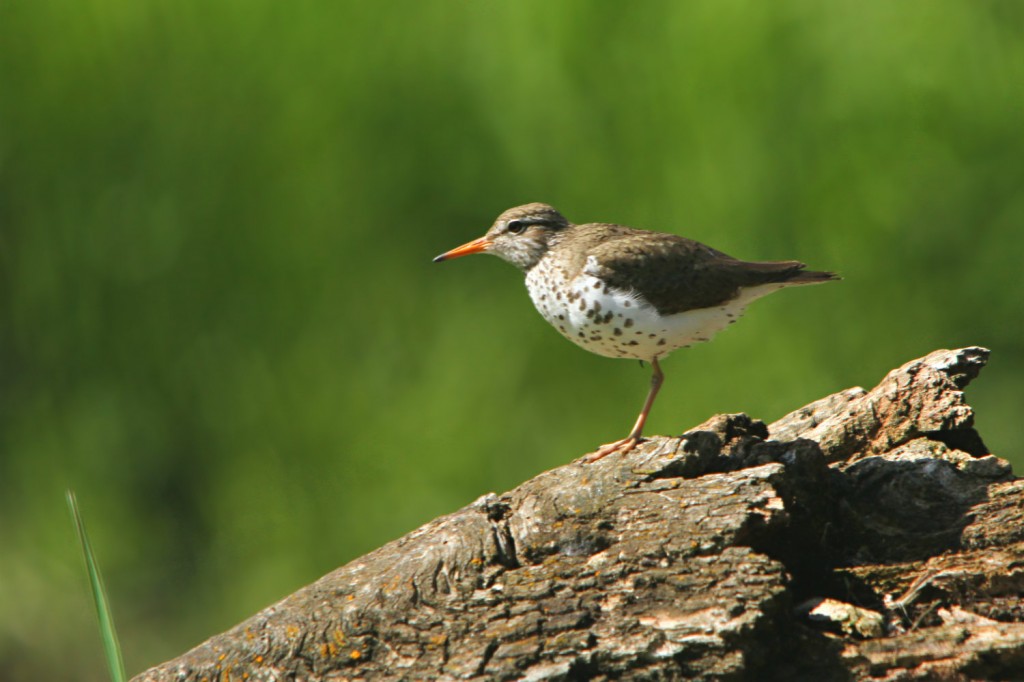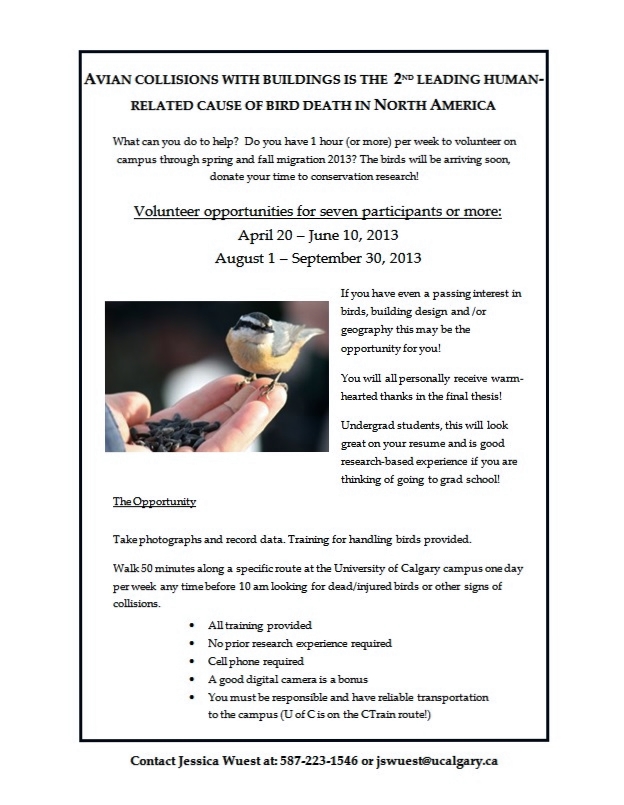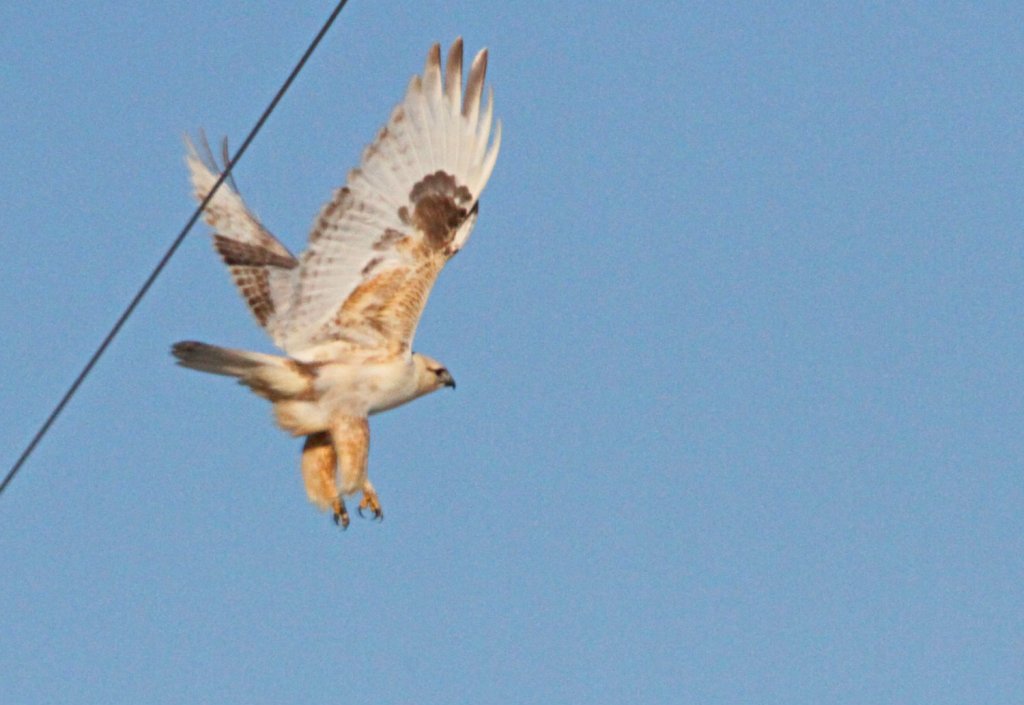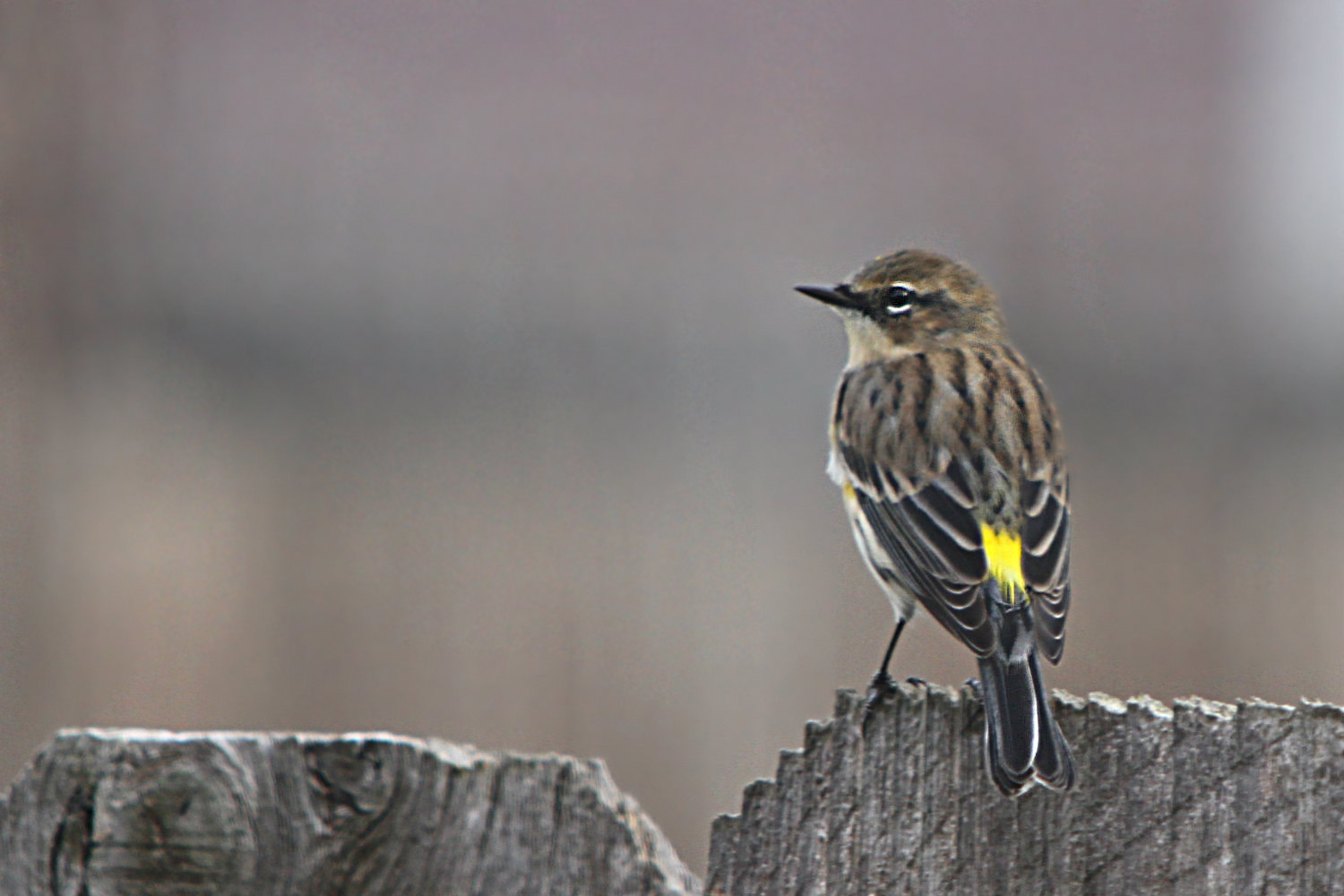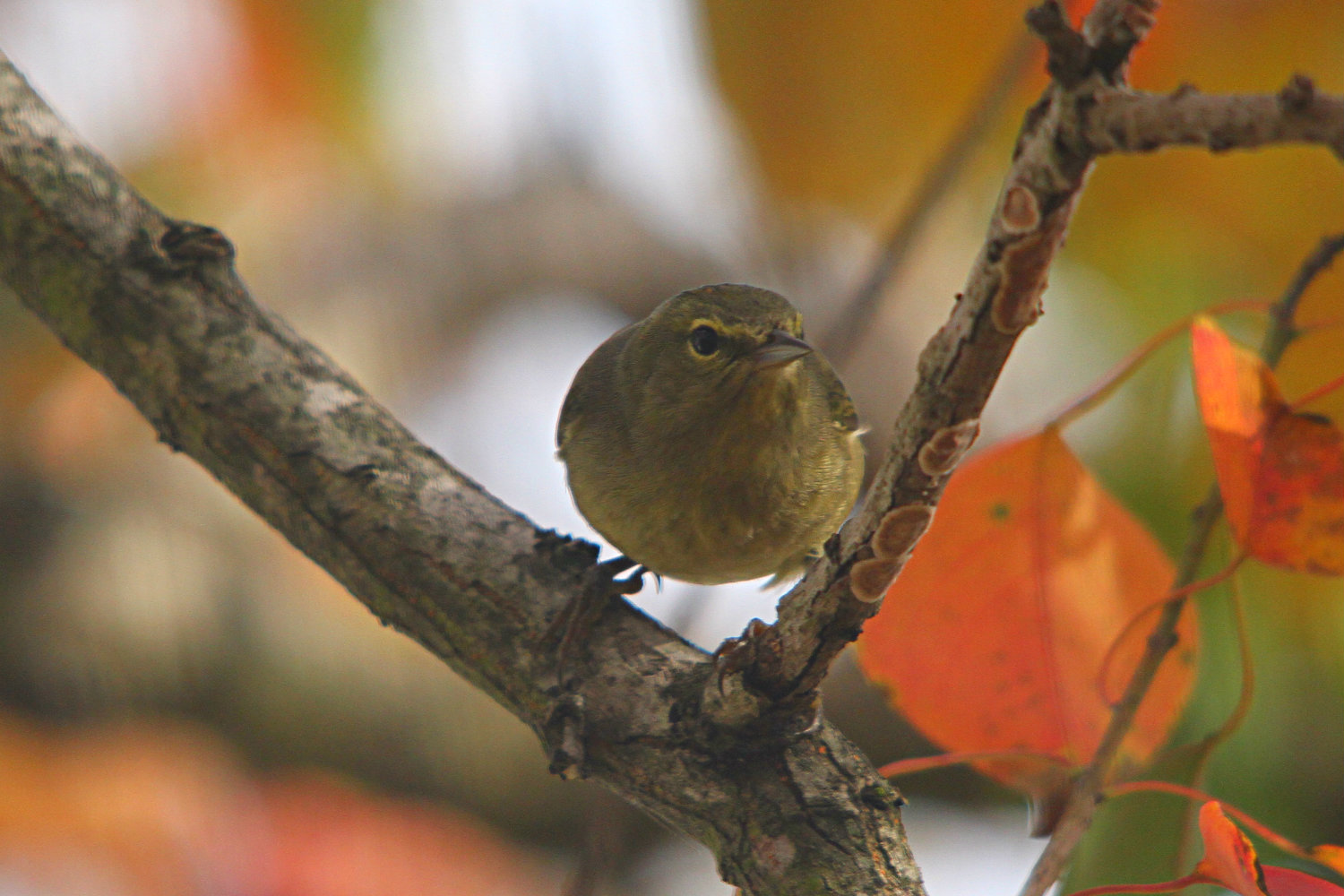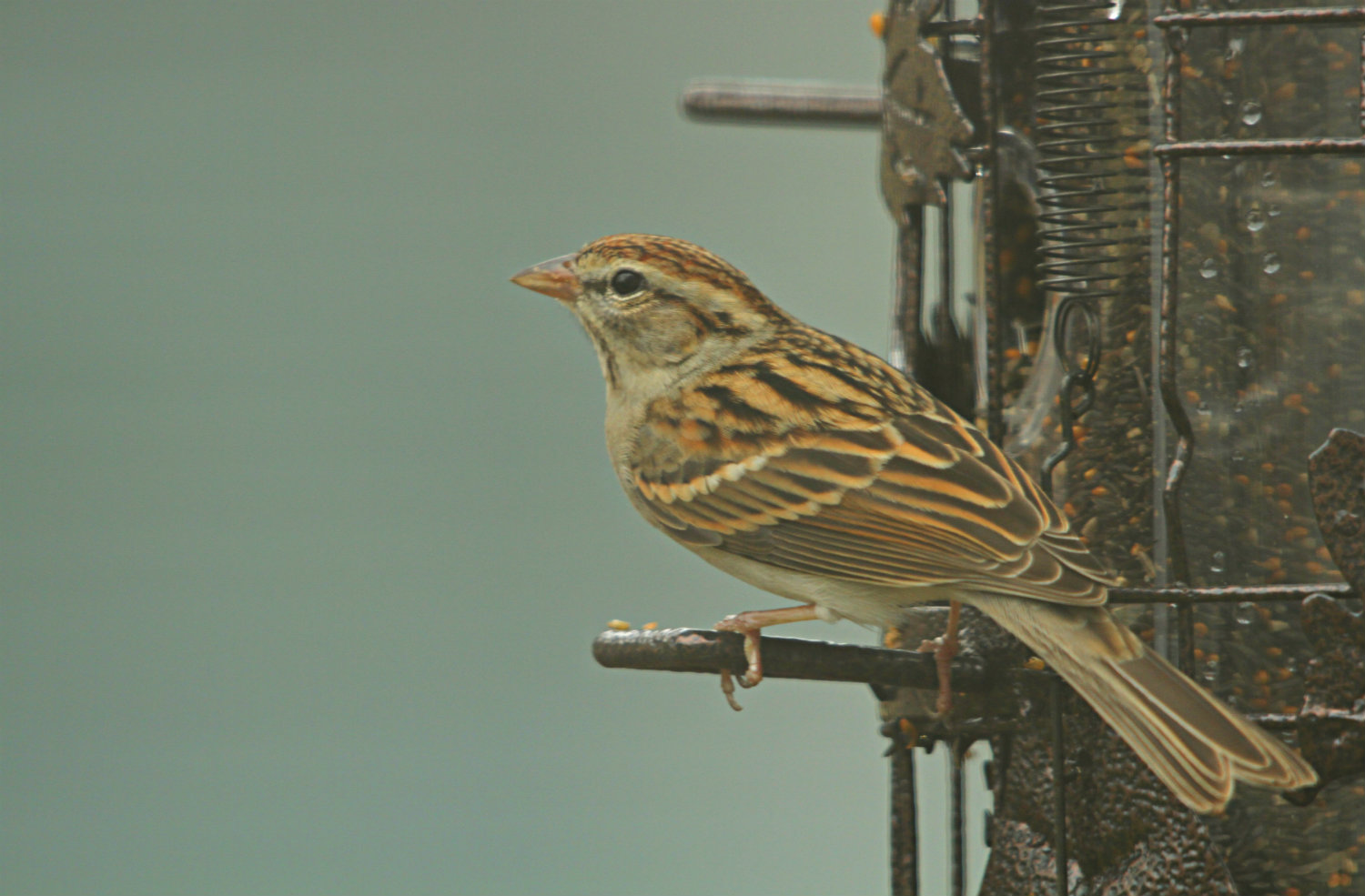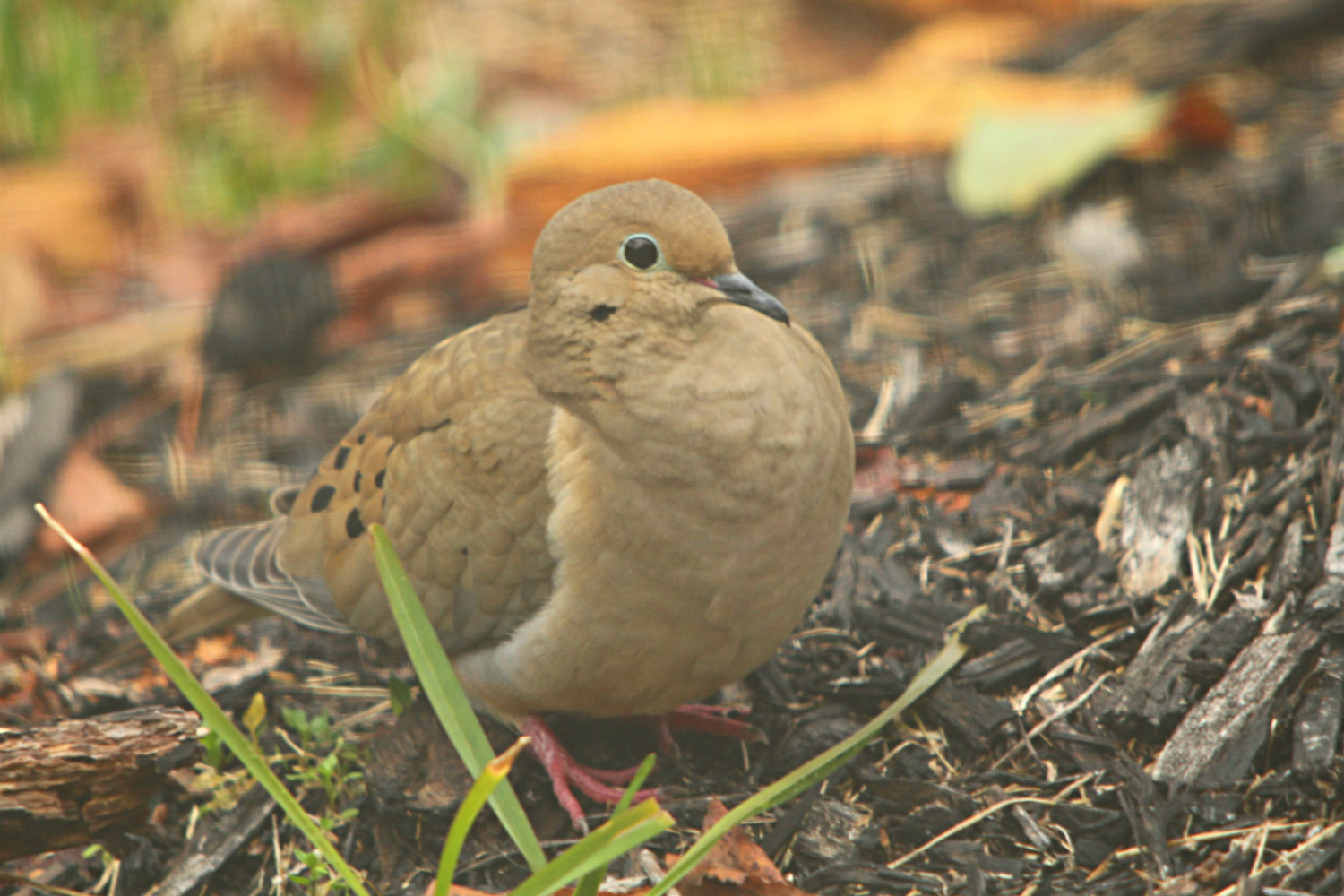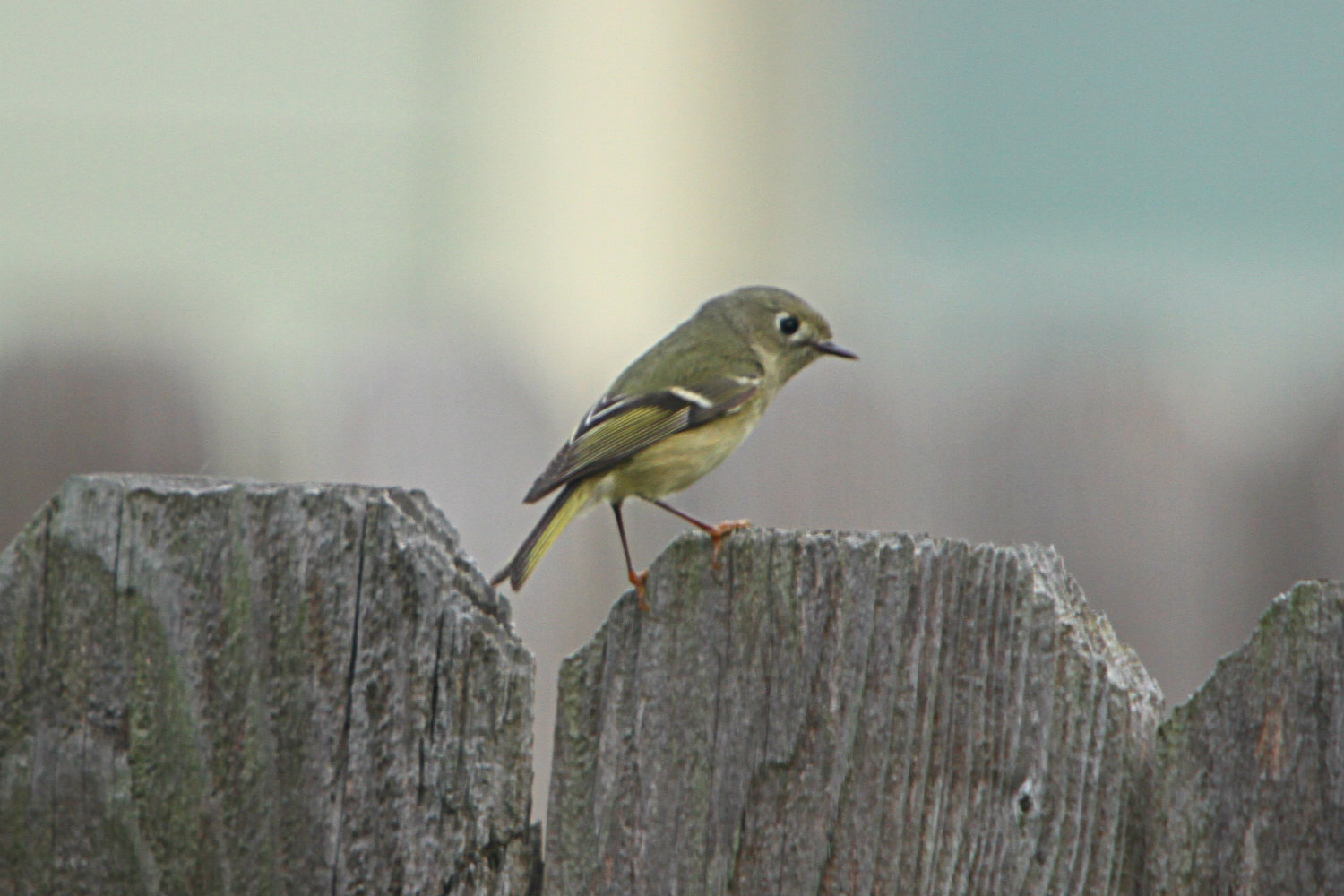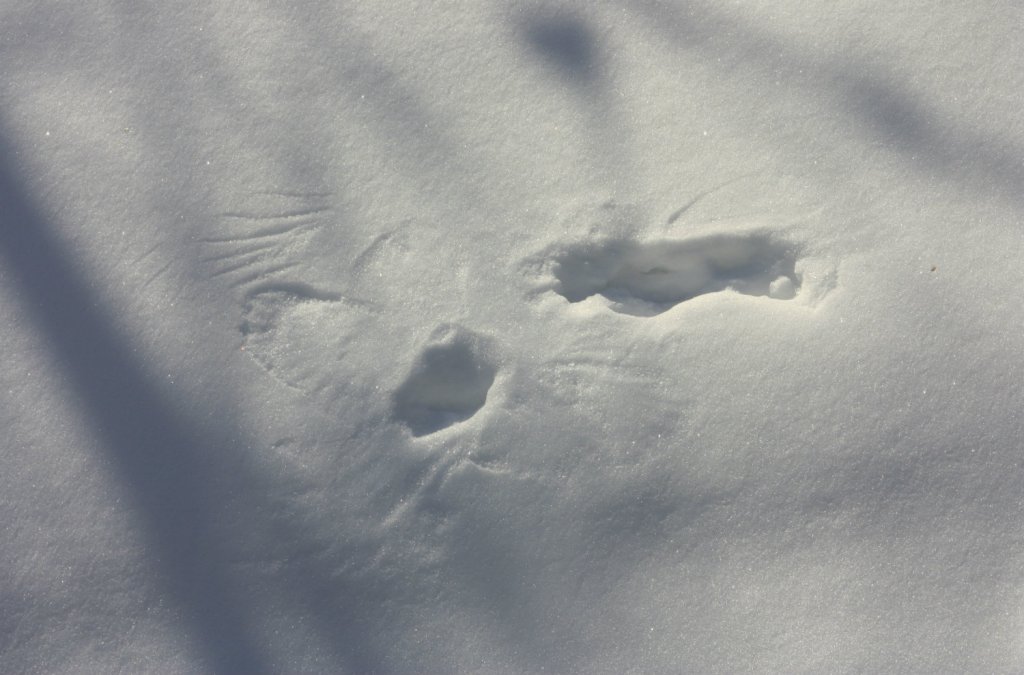Posted by Matthew Sim
Last year, I discovered a location in Fish Creek P.P. where I found 2 (and possibly all 3 species of hummingbirds that commonly occur in Calgary) nesting. In June, I had found a pair of Ruby-throated Hummingbirds and not long afterwards, Hank Vanderpol and I discovered what appeared to be a female Calliope hummingbird sitting on a nest. A couple weeks later, a Nature Calgary field trip I led to the area discovered a Rufous hummingbird nest not far away.
This year, I was finally able to get out and search for the hummingbirds last week. It took me about an hour before I finally spotted a hummingbird moving about, but always returning close to me. That’s when I realized that this female Ruby-throated Hummingbird (for this is what it was), might have a nest nearby.
Sure enough, before very long, the female Ruby-throated Hummingbird had flown to her nest which had not been too far away from me the entire time.
It was neat to watch the female as she sat on her nest, presumably incubating eggs. From time to time she would fly off but she was always alert and ready to defend her nest.
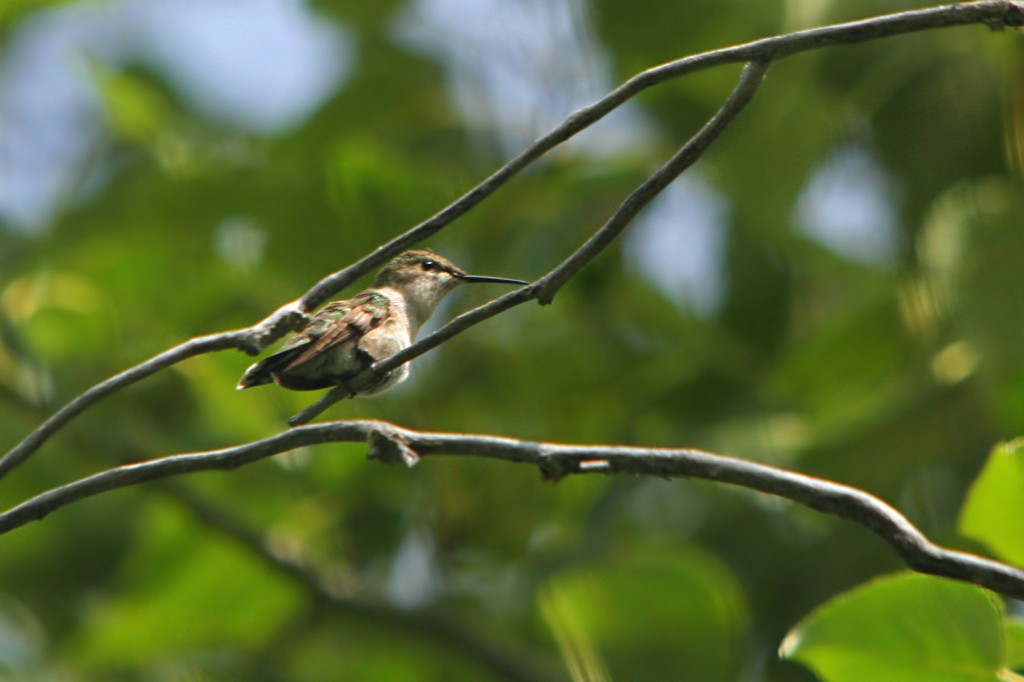
The most interesting part of watching this hummingbird though was the way she defended her nest from anything she perceived to be a threat, including a confused and startled Cedar Waxwing who twice made the mistake of landing too near the hummingbird’s nest. She swiftly drove the waxwing off despite the fact it probably wasn’t a threat; I suppose one can never be too cautious!
I will do my best to follow this nest in the coming weeks and see what comes of it. Hoping that the female will successfully raise her brood of young!
